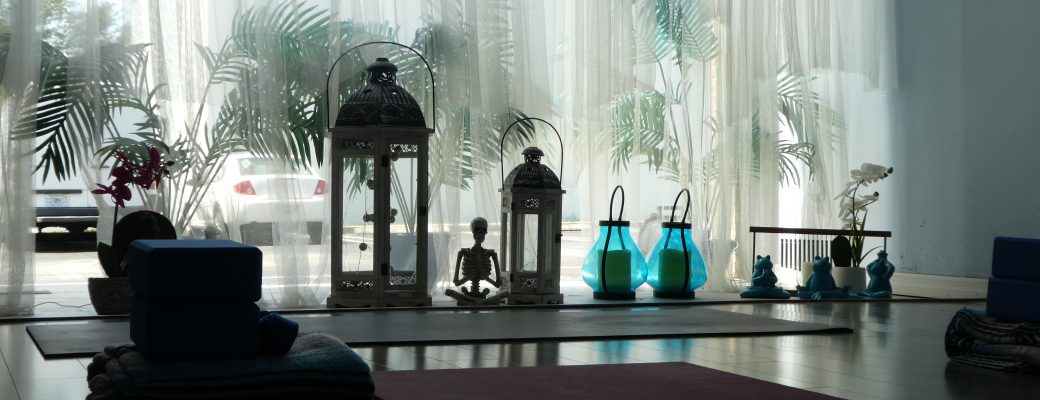November 30, 2015
Kidding Around Yoga
Kidding Around Yoga is stress reduction. For children play is their language, it’s how they learn. KAY teaches Yoga as play. You can teach kids how to use Yoga/play in difficult situations.
General Suggestions:
- Encourage physical activities.
- Take a stretch break, a Yoga study break.
- Teach children that mistakes are ok in poses (and life).
- Everyone makes them, including you.
- Teach coping with difficulties: Stop, breathe, stretch.
- Tell stories about dealing with stress.
- Make up a story with asanas about coping.
- Give back rubs and hugs.
Teach Relaxation Skills:
- Have some routines in the class, particularly around relaxation. The more ADD or ADHD, the greater the benefit of the routine.
- Different helpful interventions: count backwards; tense and release your muscles; secret garden; play with play dough; dance; chant, “Shake it up baby” shake out tension.
Breathing Practices:
- Breathe out fully 3 times.
- Breathe out bad feelings, breathe in good feelings (breath out sadness, in cheerfulness with imagery)
- Breathe out pain, breathe in health (with imagery)
- Before a tough decision, breathe until you feel good again, then make a decision
- Use bubbles to teach children that slow, even breathing can relieve anger and stress. Children learn quickly that if they blow too hard or too softly, they will not produce bubbles. But steady breaths will produce a nice stream
- After the youngsters have mastered bubble blowing, ask them to practice once or twice a day, first with bubbles and then without. Instructs them to blow imaginary bubbles when they are angry or upset.
- If you’re stressed while with children, you can say, “Help me blow bubbles”. Role model good stress release.
Meditation:
- Find the quiet place inside
- Imagine a favorite place to be and visit that place in your mind (can be the secret garden)
- Repeat “Peace begins with me”
- Raja Yoga Teachings for Children’s Stress Release
1) Cognitive restructuring can teach us to change the root cause of stress: the mental interpretation that a circumstance is somehow dangerous to our well being.
- We are a spiritual being “riding around” in a body-mind, like a car. This is the basis of Raja Yoga/ Integral Yoga.
- It can be taught through deep relaxation, meditation, and stories.
- Yoga can teach children to take back their power over their own happiness.
- You can choose happiness inside no matter what’s outside (tell stories— age appropriate)
2) Spiritual teachings from Raja Yoga that reduce stress:
- A perfect act is one that does good for someone, and harm to no one.
- It’s all for good. It’s all a movie.
- The golden rule (10 commandments, yama-niyama, basic ethics).
- What’s the problem right now? Where’s the joy/peace now?
- The “4 locks and keys”—good for dealing with interpersonal troubles.
- Friendliness to the happy
- Compassion toward the unhappy
- Delight in the virtuous
3) Disregard (indifference) to the wicked (mean, hurtful).
Use spiritual stories from the world traditions. Look for children’s versions, like Enlightening Tales.
– Two stories from Vedic culture (the ancient origins of Yoga, Hinduism and Buddhism):
– The Ramayana is a great adventure story, and teaches morality for all ages.
– The Mahabharata, (includes The Bhagavad Gita) teaches spiritual truth amidst war.
– Fairy tales often have a moral that you can discuss with children.
4) To children, when something bad happens, its a disaster and will last forever.
- Teach kids everything passes. It’s ok and it can be like a movie—an adventure. What’s Now?? What’s next?
- Expect the opposite of the current situation to come around in time.
5) Create as much order as possible in your Yoga class. Routines help children feel secure and comfortable.
- Have some basic routines of poses, stories, relaxation, and meditation.
- Keep the structure of class similar, even if content varies (e.g., there’s always an Asana section, even if postures vary).
- Keep the relaxation the same as much as possible
Swami Vidyananda, Copyright 2011
